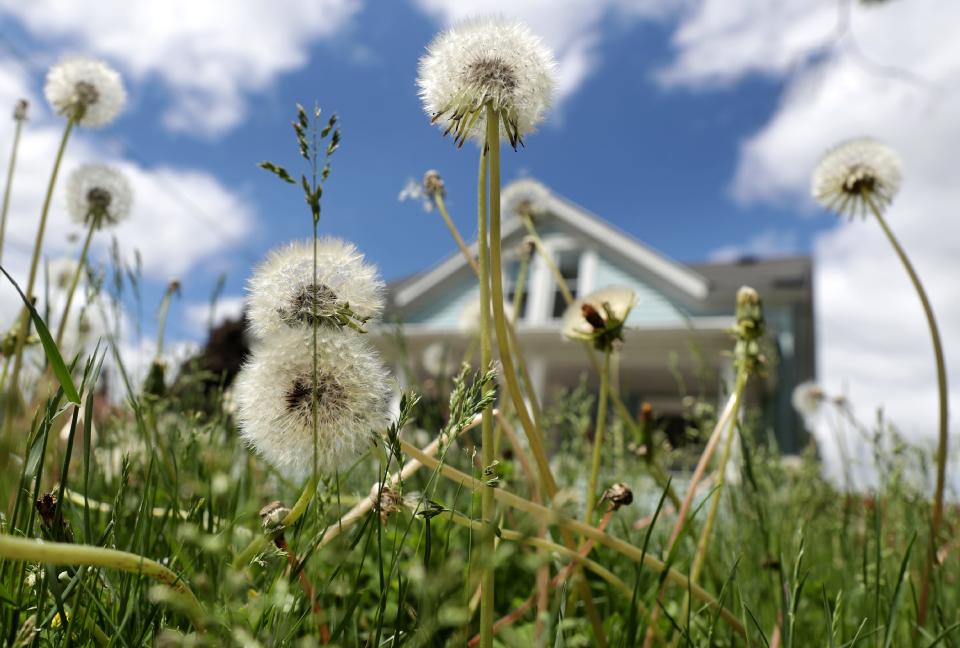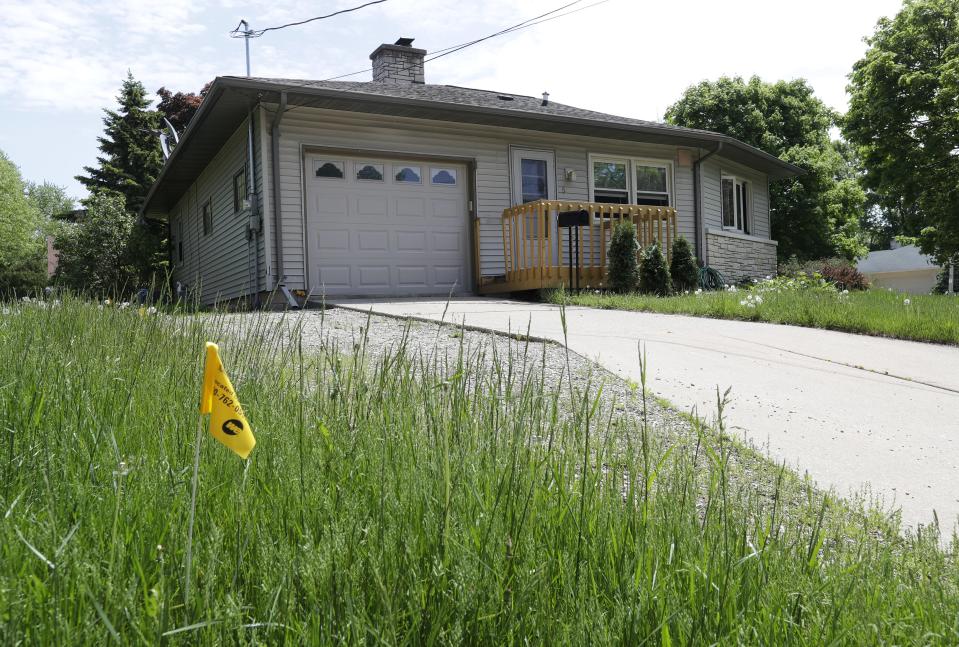No Mow May, now in its third year in Appleton, takes root in more than 20 Wisconsin communities to aid pollinators
APPLETON - If you live in Appleton, you can skip mowing your lawn all May and feel good about enhancing the urban habitat for bees and other pollinators.
The same holds true if you live in Green Bay, Oshkosh, Stevens Point or Wausau.
Now if you try that in Neenah or Menasha, you're likely to hear from a code enforcement officer, ordering you to cut the grass and weeds to 8 inches or lower.
It can be a jungle out there deciphering who can freely participate in the No Mow May initiative and who can't without the risk of a visit from the lawn police.
The Post-Crescent is here to help. We contacted Israel Del Toro, an assistant biology professor at Lawrence University and one of the leading promoters of No Mow May. He's been tracking the growth of No Mow May since Appleton first adopted it in 2020.

Appleton was the lone city to participate the first year. It expanded to nine Wisconsin communities last year and has spread to more than 20 this year, plus Edina, Minnesota, and Rochester, New York.
"That's outstanding," Del Toro said of the progress. "I'm happy to see that a lot of the suburbs around major cities like Milwaukee and Madison are starting to pick it up. Hopefully in future years, the larger cities will jump on board when they see the success in the surrounding communities."
The Wisconsin communities participating in No Mow May are Appleton, Cross Plains, De Pere, Egg Harbor, Fort Atkinson, Fox Crossing, Green Bay, Greenfield, Hortonville, Kaukauna, La Crosse, Medford, New Holstein, Oshkosh, Rib Mountain, Rockland, Stevens Point, Sun Prairie, Superior, Verona, Wausau and Wisconsin Rapids.
More: How to help Wisconsin's disappearing native bees in your yard
Appleton, like many cities, has an ordinance that restricts the height of grass and weeds to 8 inches on developed lots, but under No Mow May, the city suspends enforcement of the rules until June 1. The city adopted No Mow May on a trial basis in 2020 and 2021, and the Common Council voted 10-4 last month to make it a permanent fixture.
Participation in No Mow May is voluntary. Participants can register online at www.BYOBeez.org/NoMowMay.
Del Toro said 450 participants registered the first year and 2,500 registered the second year.
"This year, I wouldn't be surprised if we double that, to 5,000 people participating across the state and beyond the state," he said.
Avoiding regular mowing during May promotes the maturation of flowering plants — dandelions, violets, clover and creeping Charlie — that provide food for bees and other pollinators early in the growing season.
In 2020, a sampling of No Mow May lawns in Appleton found a fivefold increase in bee abundance and a threefold increase in bee diversity compared to nearby parkland that was mowed regularly.
In 2021, samplings in Appleton, Oshkosh and Wausau indicated No Mow May not only increased the abundance of pollinators, but also insects in general.
"Preliminary results suggest somewhere between a seven- and a tenfold increase in insect abundances," Del Toro said. "That's a good thing because insects are the base of a lot of the food web."
This year, Del Toro is planning a citizens science project to measure the colorfulness of No Mow May lawns.
"If you have a smartphone and a tape measure, you can participate," he said. "We'll be releasing that information within the next week."
Neenah debated No Mow May last year, but that's as far as it got.
The Sustainable Neenah Committee recommended the city participate on a trial basis, but the Public Services and Safety Committee, on a 3-2 vote, didn't support participation, and no one on the Common Council requested further consideration.
"It has not come up again," said Chris Haese, Neenah's director of community development and assessment.
Detractors say No Mow May makes a community look trashy, aggravates pollen allergies and starts or magnifies conflicts among neighbors.
Haese suspects some Neenah property owners participate in No Mow May without the city's blessing.
Enforcement of the ordinance restricting the height of grass to 8 inches often is initiated by complaint. The city then inspects the property and, if it's found to be in violation, issues an order for the grass to be cut.
"They have some time to correct it, so by the time they correct it, we could very well be through most of May," Haese said.

Thanks to our subscribers for making this coverage possible. Your support helps local journalism.
Menasha also hasn't embraced No Mow May.
"I know it was a topic of discussion in front of the Sustainability Board," Community Development Director Sam Schroeder said, "but there has not been anything in front of our council, and we have not done it in years past."
During Appleton's debate on No Mow May, council member Vered Meltzer championed the initiative as an affordable, effective means to help the urban environment.
"It does not cost the city any money," Meltzer said. "It does not cost the citizens any money. In fact, money and resources can be saved during the participation."

Contact Duke Behnke at 920-993-7176 or dbehnke@gannett.com. Follow him on Twitter at @DukeBehnke.
This article originally appeared on Appleton Post-Crescent: Wisconsin 'No Mow May' movement helps bees pollinate

